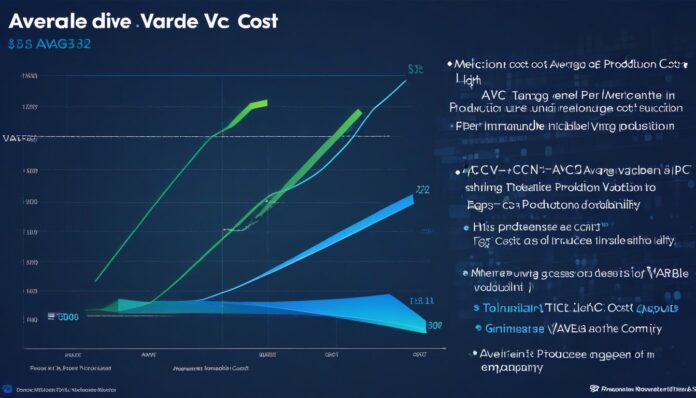Deep Dive into Average Variable Cost (AVC): Understanding the Per-Unit Cost of Production
In the intricate world of production, where costs and outputs dance a delicate tango, understanding the average variable cost (AVC) becomes paramount. This key metric unveils the cost incurred per unit of production for variable expenses, shedding light on a company’s efficiency and profitability.
Decoding the Essence of AVC:
Variable costs, unlike their fixed counterparts, fluctuate directly with the volume of output. Think raw materials, direct labor, and utilities – their consumption rises and falls in tandem with production levels. AVC, therefore, captures the average impact of these changing variable costs on each unit produced.
Think of it this way: Imagine crafting wooden figurines. Each figurine requires a specific amount of wood, paint, and glue. As you produce more figurines, the total cost of these materials escalates proportionally. AVC tells you the average cost of wood, paint, and glue incurred for each figurine you create.
Unveiling the Formula:
Calculating AVC is a straightforward affair, requiring just two variables:
- Total Variable Cost (TVC): The sum of all variable expenses incurred for a given production level.
- Quantity of Output (Q): The total number of units produced.
Simply plug these values into the formula:
AVC = TVC / Q
The resulting figure tells you the average cost associated with producing each unit.
AVC in Action: A Tale of Insights and Decisions
Decoding AVC unlocks a treasure trove of valuable insights for businesses:
- Production Efficiency: A declining AVC as output increases suggests improved efficiency – economies of scale kicking in! Conversely, a rising AVC might indicate inefficiencies demanding attention.
- Pricing Strategy: Knowing the average cost per unit helps businesses set optimal prices that cover costs and generate profit. Pricing below AVC is a recipe for disaster.
- Production Decisions: AVC guides crucial production decisions. Should production be ramped up, scaled down, or even temporarily halted? AVC whispers the answers.
Exploring the Dynamics of AVC:
AVC’s relationship with other cost concepts forms a fascinating narrative:
- Average Total Cost (ATC): Adds fixed costs to AVC, offering a more comprehensive picture of the per-unit cost.
- Marginal Cost (MC): Represents the change in total cost due to producing one additional unit. AVC and MC often intersect at the minimum point of the ATC curve, signifying the production level where efficiency is maximized.
By understanding these intricate relationships, businesses can navigate the cost landscape with greater confidence.
Conclusion: AVC – A Compass for Production Optimization
Average variable cost, though a seemingly simple concept, holds immense power in guiding production decisions. By dissecting its meaning, formula, and dynamics, businesses can optimize their operations, ensure profitability, and ultimately thrive in the competitive marketplace. So, the next time you encounter AVC, remember – it’s not just a number, it’s a valuable compass pointing towards efficient and profitable production.











